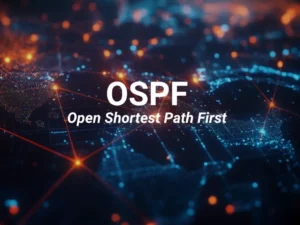EIGRP Practice Labs
- Description
- Curriculum
- Reviews
This course offers a comprehensive set of hands-on labs to master EIGRP, a dynamic routing protocol that combines distance-vector and link-state features. Participants will gain practical experience in configuring Classic EIGRP, Named EIGRP, and EIGRP for both IPv4 and IPv6 environments. Advanced labs cover features like route summarization, load balancing, authentication, and stub routing, while optimization labs focus on tuning EIGRP metrics, timers, and bandwidth usage for peak performance. Each lab includes detailed objectives, topology diagrams, configuration steps, and verification commands to ensure a thorough understanding of EIGRP’s operation in enterprise networks. The course also addresses troubleshooting techniques and best practices for scalability, preparing students for Cisco certification exams and real-world network administration.
-
1Lab 1 - Objectives and BackgroundTrial Text lesson
In this lab, you will configure and examine EIGRP in two forms, Classic EIGRP and Named EIGRP. Named EIGRP is an update to Classic EIGRP that added multiprotocol support and default support for wide metrics.
-
2Part 1.1: Configure Basic Device SettingsTrial Text lesson
In Part 1, you will set up the network topology and configure basic settings on routers.
-
3Part 1.2: Configure and Verify EIGRP for IPv4Trial Text lesson
Configure EIGRP with Autonomous System 27. R1 and R3 use Named EIGRP; R2 uses Classic EIGRP.
-
4Part 1.3: Tune EIGRP for IPv4Trial Text lesson
In this part of the lab, you will tune and optimize EIGRP for IPv4 through the use of passive interfaces, authentication, and variance.
-
5Lab2 - Objectives and BackgroundTrial Text lesson
Customizing EIGRP operations can enhance network performance by speeding up convergence and stabilizing operations during outages. This lab explores advanced EIGRP techniques to optimize performance
in an enterprise network. -
6Part 2.1: Configure Basic Device SettingsTrial Text lesson
-
7Part 2.2: Implement EIGRP for IPv4Trial Text lesson
-
8Part 2.3: Implement Advanced FeaturesTrial Text lesson
-
9Lab 3 - Objectives and BackgroundTrial Text lesson
In this lab, you will configure the network with EIGRP for IPv6. You will also configure passive interfaces, propagate a default route, configure a summary route, implement routing protocol authentication, modify load balancing, and filter routes with a prefix list.
-
10Part 3.1: Build the Network and Configure Basic Device SettingsTrial Text lesson
In Part 1, you will set up the network topology and configure basic settings and interface addressing on routers.
-
11Part 3.2: Implement EIGRP for IPv6 and Named EIGRPTrial Text lesson
In this part of the lab, you will configure and verify EIGRP in the network. Routers R1 and R3 will used Named EIGRP, while router R2 will use Classic EIGRP. After you have established the network, you will examine the differences in how each version of EIGRP deals with metrics.
-
12Part 3.3: Tune and Optimize EIGRP for IPv6Trial Text lesson
In this part of the lab, you will tune and optimize EIGRP for IPv6 through the use of passive interfaces, default router redistribution, summary routes, authentication, load balancing, and route filtering.

Duration: 20 hours (self-paced, split across 10 lab sessions)
Level: Intermediate to Advanced
Delivery Method: Virtual labs with step-by-step guides
Tools Required: EVE-NG, Cisco Packet Tracer, GNS3, CML or physical Cisco routers (IOS 15.x or later)
Certification Alignment: CCNA (200-301), CCNP Enterprise (ENARSI 300-410), CCIE Enterprise Infrastructure
Prerequisites: Basic understanding of IP networking, routing concepts, and Cisco IOS commands
Hardware/Software:
EVE-NG, Cisco Packet Tracer or Cisco CML installed on a computer with at least 8GB RAM
Cisco IOS routers (physical or emulated, IOS 15.x or later)
Basic familiarity with Cisco IOS command-line interface
Knowledge:
Understanding of IP addressing (IPv4/IPv6), subnetting, and basic routing concepts
Familiarity with Cisco certification objectives CCNA, CCNP
CCNA Candidates: Network professionals preparing for the Cisco Certified Network Associate (200-301) exam, seeking foundational EIGRP configuration skills.
CCNP Candidates: Those pursuing the CCNP Enterprise (ENARSI 300-410) certification, focusing on advanced EIGRP features and troubleshooting.
CCIE Candidates: Advanced learners aiming for the CCIE Enterprise Infrastructure certification, requiring in-depth knowledge of EIGRP optimization and complex configurations.
Network Administrators: Professionals working with Cisco-based enterprise networks who need hands-on experience with EIGRP for deployment and maintenance.







